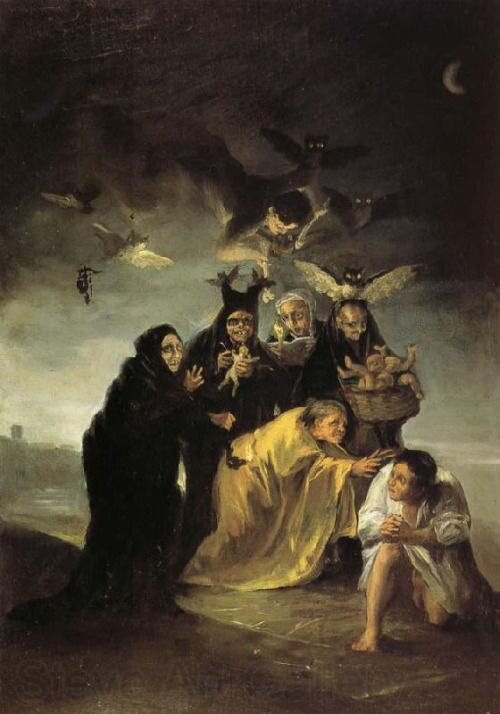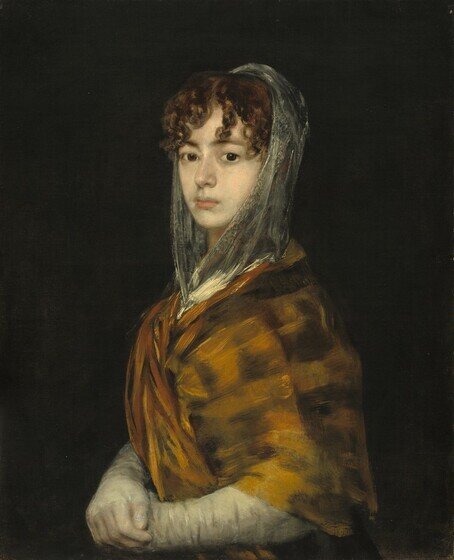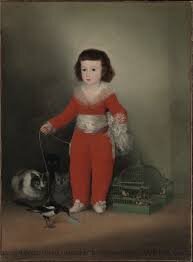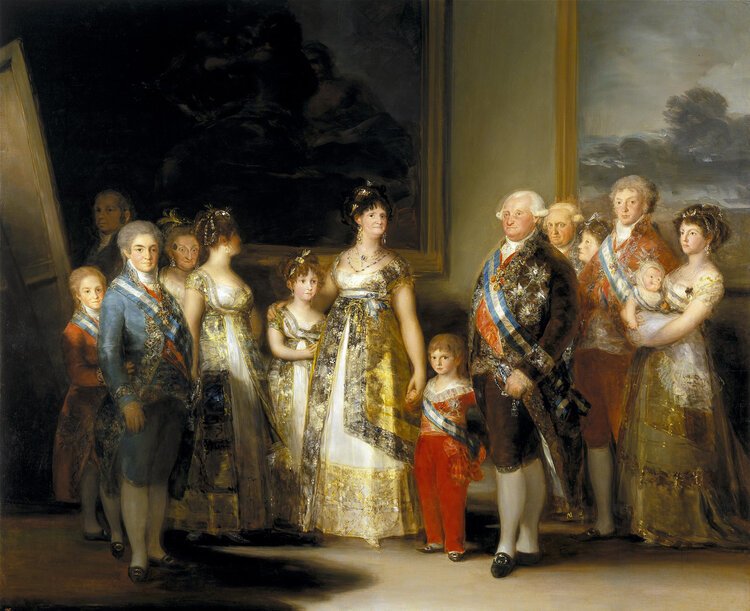Goya: Father Of Modern Art
Francisco José de Goya y Lucientes was a romantic painter who lived in Spain. He is often regarded as the most important Spanish painter of the late eighteenth and early nineteenth century. His paintings, drawings, and engravings were influenced by significant 19th- and 20th-century painters and represented contemporary historical upheavals. Goya is known as the last of the Old Masters and the first of the moderns.
In 1780, Goya was elected a member of the Royal Academy of San Fernando in Madrid, using a Christ on the Cross as his admission piece, a traditional composition but painted in a naturalistic approach. In 1785, he was appointed as the Academy's deputy director of painting, and the following year, he was named painter to King Charles III. His early work is characterised by portraits of the Spanish aristocracy and royalty. In 1793, he became deaf due to a serious and undetected illness, and his art became darker and pessimistic as a result.
Goya and Napoleon:
When Napoleon's soldiers entered Spain in 1808, the enlightened monarchy of Charles IV came to an end. Despite his abhorrence of French atrocities, Goya vowed allegiance to Bonaparte and portrayed members of his regime. He was given the Royal Order of Spain in 1811.
With Napoleon's defeat in 1814, the Bourbon monarchy was restored. However, the new king, Ferdinand VII, son of Charles IV, did not share his father's progressive ideas. He overthrew the Constitution, restored the Inquisition, and declared himself sovereign monarch. He started on a terror rampage not long after that. In a series of eighty-five prints titled, “The Disasters of War”, Goya resumed his account of war's tragedies. The series, which ran from 1810 to 1820, depicts the atrocities that occurred during Spain's war for independence from France.
With no royal commissions during Ferdinand VII's unstable monarchy, Goya grew isolated from Madrid's political and intellectual life. He made a series of very personal pieces between 1820 and 1823. The Black Paintings, as they are now known, are captivating in their gloomy and frequently horrific themes with dark, emotional overtones.
Famous paintings by GOYA:
The Naked Maja, The Clothed Maja, The Family of Charles IV, The Third of May 1808: The Execution of the Defenders of Madrid, and Saturn Eating His Children were among Francisco Goya's most famous works.
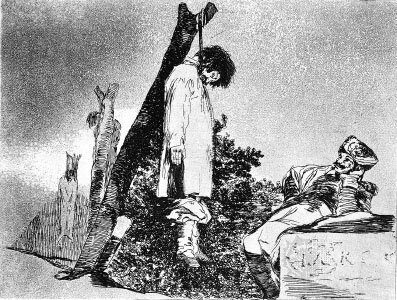

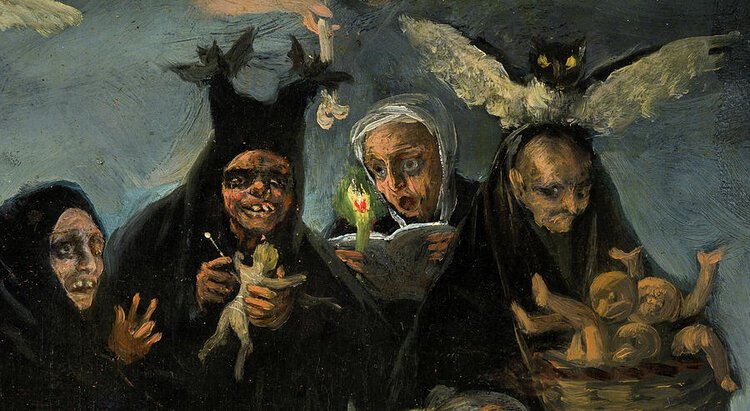
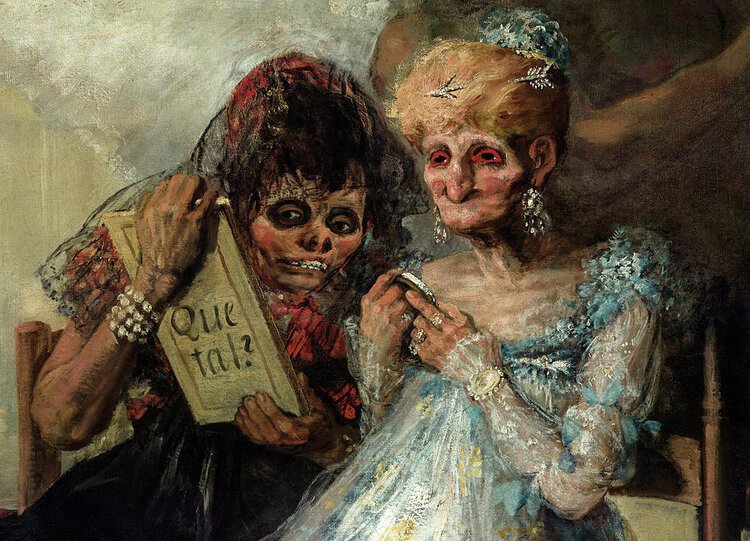
Charles IV of Spain and His Family:
At the height of Goya's career as a court painter, he painted this portrait of the Spanish royal family. Unlike many of his early society and court portraits, which adhered more closely to the genre's flattering standards, this picture marks a shift in the artist's style with its unflinchingly realistic portrayal of its sitters. Goya depicts himself in the shadows, standing in front of a large canvas in the far left background. The figure of Queen Maria Luisa is in the centre of the composition, well lit, and King Charles stands to her left. His off-center location reveals information about the family's power dynamics, as well as their flaws and weaknesses. The play of light and shadow, as well as the overall warm tonality of Goya's palette, demonstrate Rembrandt's influence on the artist.
The Black Duchess:
When it came to his relationships with members of Spain's social elite, Goya was the topic of scandal and speculation. He was suspected, for example, of having an affair with the aristocratic Maria Cayetana de Silva, the 13th Duchess of Alba, one of Spain's most famous women. The Duchess is depicted in mourning black, wearing the traditional clothing of a maja, a very elegant member of Spain's lower classes known for their bold behaviour, in this portrait painted a year after the Duke's death.
The Third of May, 1808:
Invasion of Spain by Napoleon's soldiers in 1808 ended Charles IV's monarchy and signalled the start of the Peninsular War. The Spanish government commissioned Goya to paint The Third of May, 1808 to commemorate the evacuation of the French army in 1814. In reprisal for the day before's insurrection, we watch French soldiers execute unarmed Spaniards. The unarmed man in the brightly lit middle, standing with his arms raised in submission, is the composition's main point. At his feet are the bodies of recently executed rebels, as a gang of soon-to-be-shot insurgents stands behind him. The painting is considered to be one of the first truly modern images of war.
Saturn Devouring His Son:
Another of Goya's "Black Paintings" created at La Quinta del Sordo is Saturn Devouring His Son. It represents the Greek myth of Titan Kronus, who ate his kids because he was afraid that one of them might overthrow him. Goya's preoccupation with dark and dreadful topics, whether documentary or legendary, is evident in this piece.
Conclusion
Goya is one of the most influential painters through his emotions and paintings. Goya did not write about these works and never intended for them to be displayed in public, his true intentions remain a mystery. Comment below if you can guess why he never intended on displaying these paintings in public.


